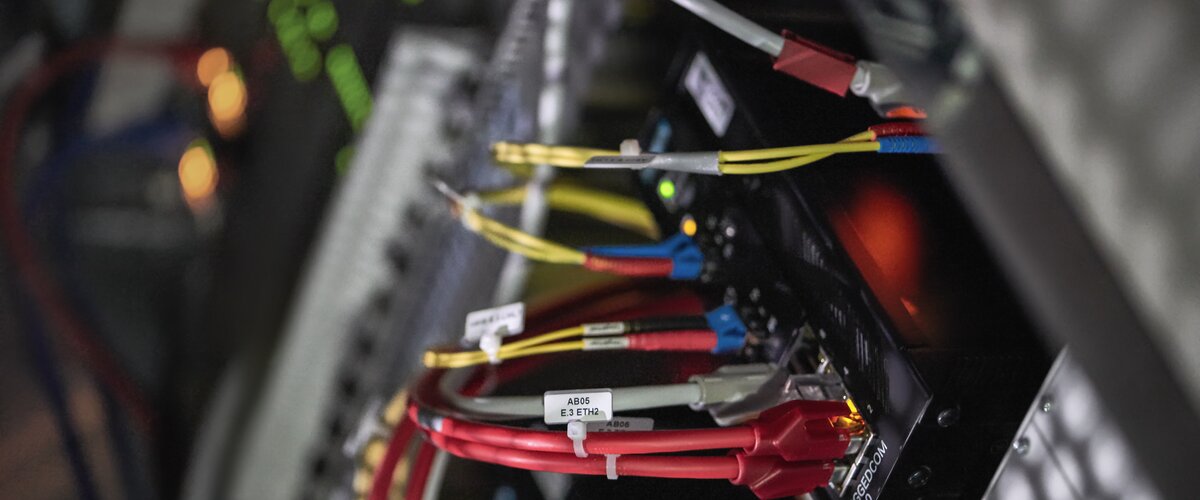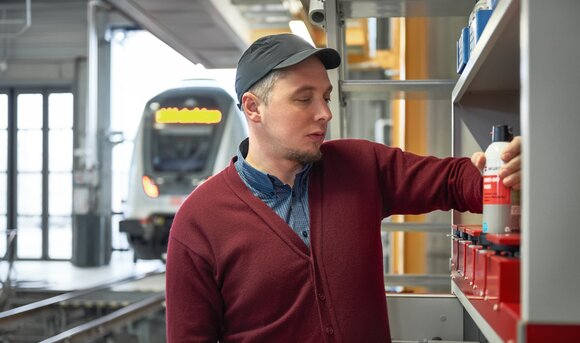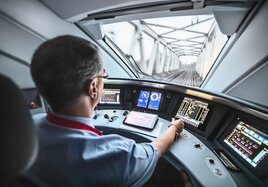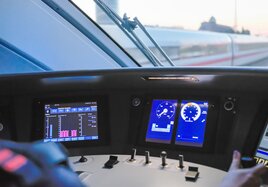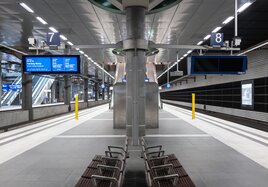Digitalization, automation and artificial intelligence are the keys to increasing capacity and achieving optimal capacity utilization of the rail network. That is why they are central to us at DB. With Digital Rail, we can attract even more passengers and freight onto our trains. This not only benefits our travelers; it's good for the climate too.
The future is on track
A digital rail network has many different components. We are putting in place the next generation of control-command and signaling systems: by rolling out the European Train Control System (ETCS) nationwide, installing digital signaling technology and using an integrated command and control system. This will allow rapid modernization and digitalization of the existing signaling, interlocking and railroad crossing technologies on the lines concerned. These technologies will enable us, for example, to use digital remote diagnostics to remedy disruptions more efficiently and reduce our servicing of the infrastructure. As a result, our trains will be more punctual and reliable.
The full potential of the digital rail system will be unleashed with the second stage of Digital Rail. In the future, trains will be able to run fully automatically and at shorter intervals and be controlled intelligently by automated systems in real time. Smart sensors will enable them to recognize their surroundings and their position. Rail lines will be more efficient, increasing the capacity of the existing network by up to 35%. This means more travelers and more freight traffic on the railways and less traffic on the roads. All of this will help us save emissions and protect the environment.
Digital signaling systems under construction
The first digital signaling systems are already up and running. In Annaberg-Buchholz in Saxony, the switches and signals on one regional line have been controlled digitally since 2018. Digital signaling systems are also in operation for long-distance traffic, for example in Rostock-Warnemünde.
In Plauen (Vogtland), we are installing a new digital signaling facility, which will go live by 2025. This will replace 12 existing signal boxes in Wünschendorf, Berga, Greiz, Greiz-Dölau, Elsterberg, Barthmühle and Plauen. Signals and switch machines are also being renewed between Gera and Weischlitz. Once the modernization is complete, everything will run digitally: Using the new integrated command and control system, our dispatchers will send commands to switches and signals via fiber optic cable at the click of a mouse.
These are just the first of many digital signaling installations set to control trains on Germany's 33,000-kilometer rail network in the future. They will gradually replace the more 2,500 signaling systems of different types dating from previous decades.
